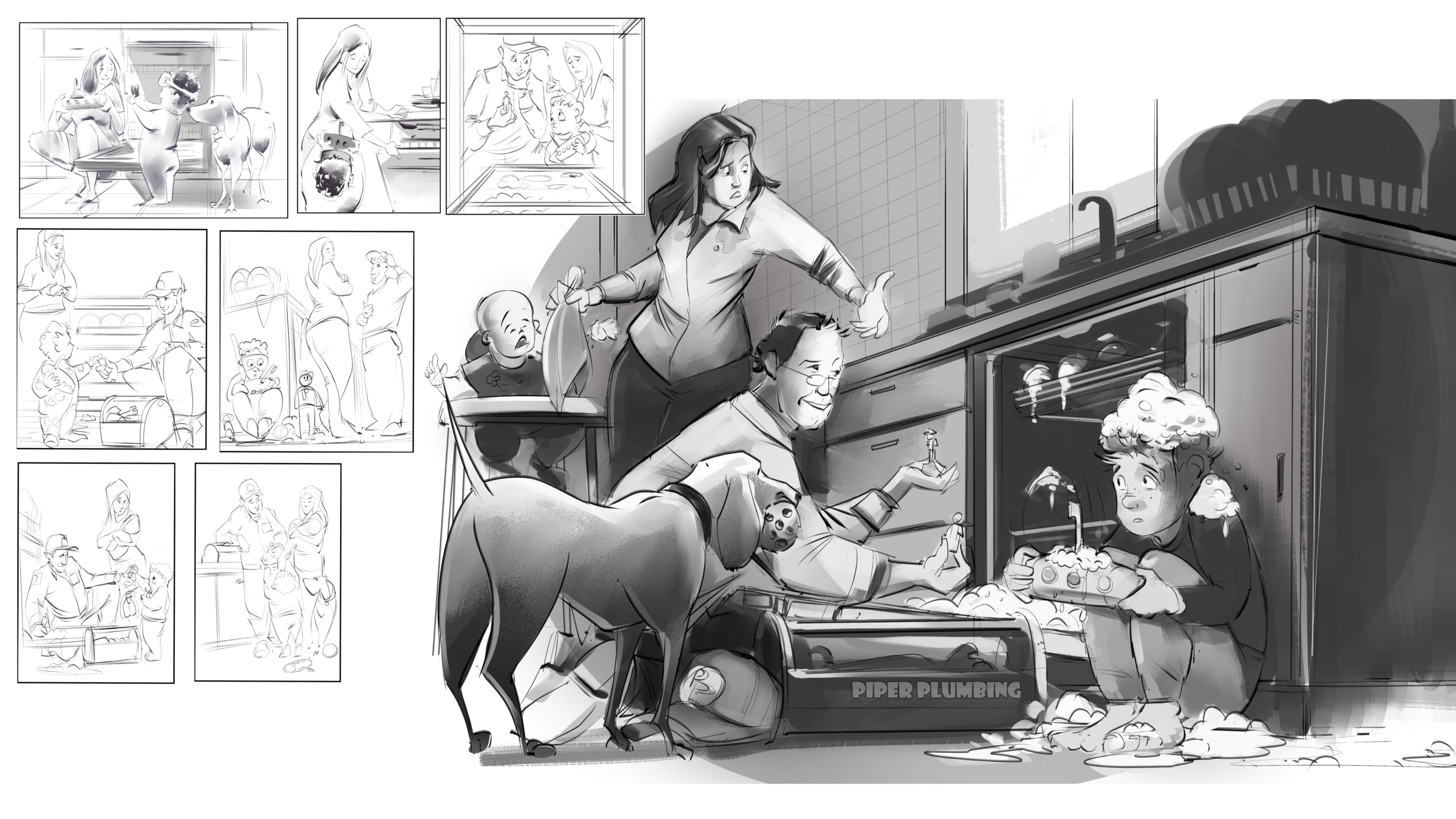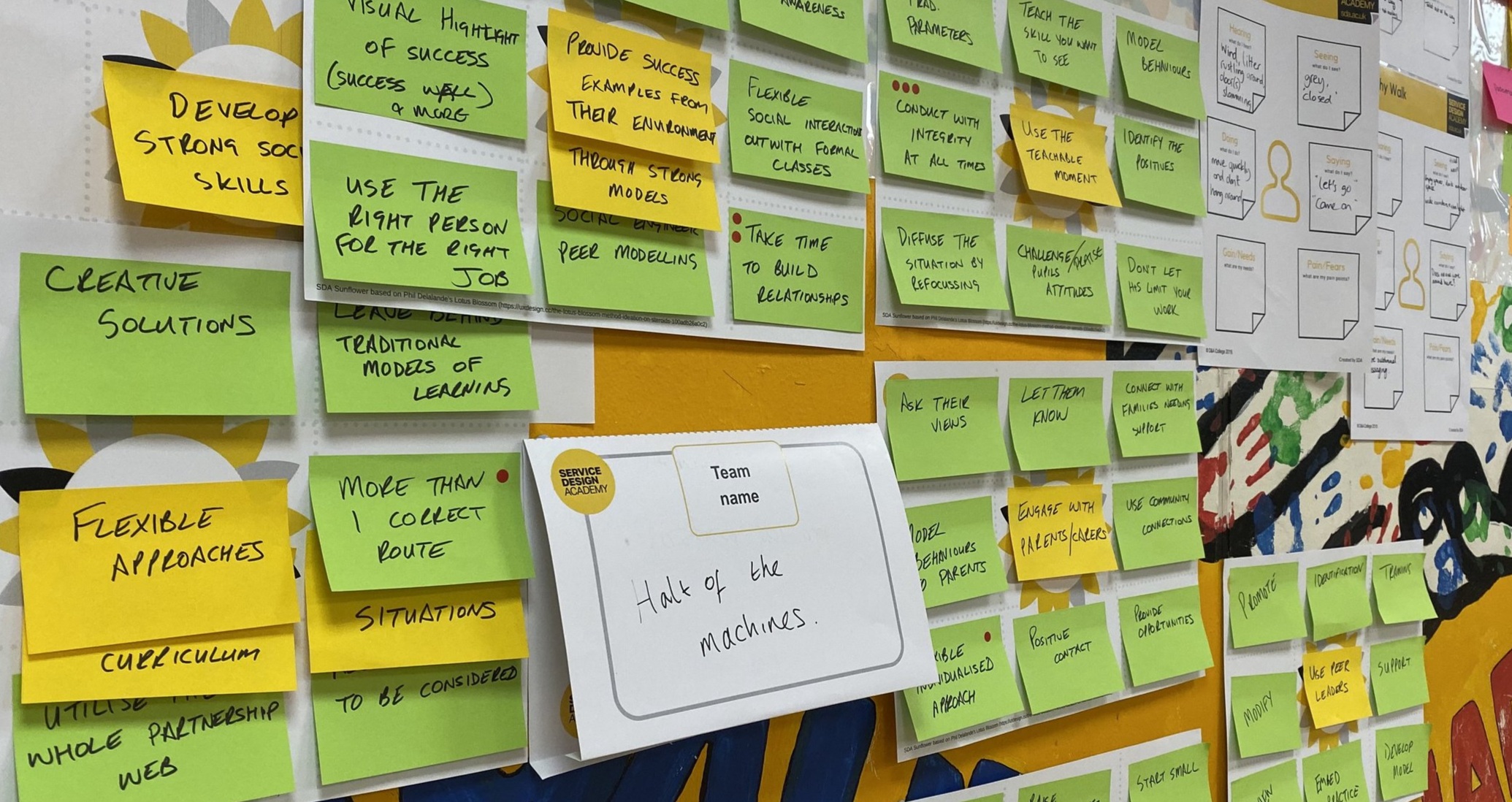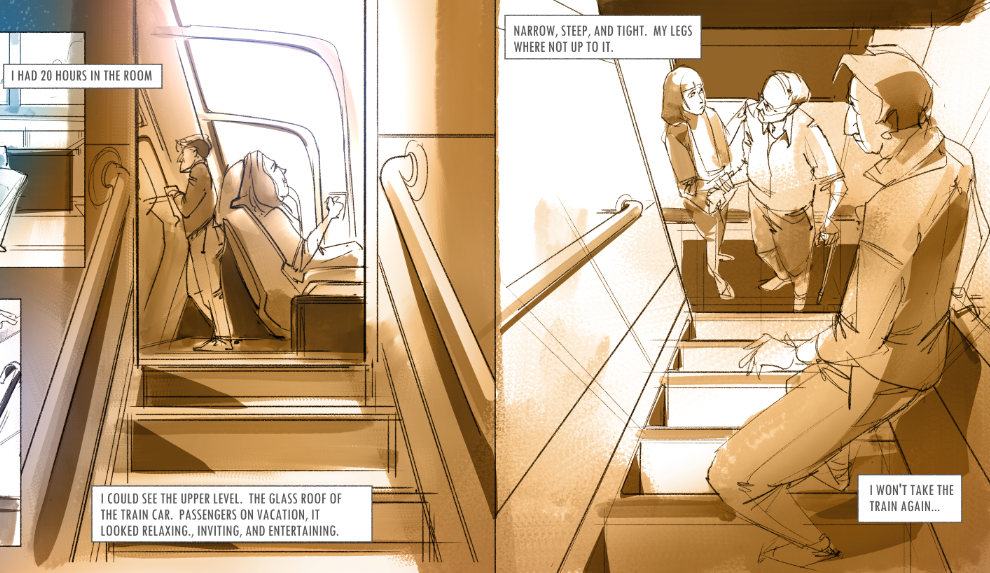Visual and Verbal in Story Ideation
Story Ideation to me is exploring a story, an anecdote, a bit of consumer experience through the very physical act of sketching. A thought Experiment, forcing decisions about emotion, context and characters.
Design a Window…
The image below started as a thought experiment for a project that focused on windows. A glass frame for letting light, air and aroma in and out of the house. The process of pen to paper forces you to analyze and synthesize memory, photo references , emotion and improvisation all at once.
What began as a sketch of a window became a story about Mrs. Merrill and her morning coffee, her garden, the birds, her cats, the morning fresh air, the scent of her blooming flowers, the wind chimes, and all the items and creatures that live on the window ledge…just to mention a few. It created a series of conditions to consider and potential solve for in the features and forms of the window product ideation.
Sketching like a storyboarder for product ideation, forces you to use:
-Observation skills
-Imagination
-Improvisation
In a search for a deeper purpose or meaning behind a product beyond feature improvements.
It is not to replace real research and user engagement, but to enhance your senses and skills in these areas. It also makes your user the HERO of the story. Isn’t that why you are designing in the first place?
To create value or solve problems for Humans., not to create museum pieces or functional sculpture.
Keep sketching!
Which came first the chicken or the egg? The visual or verbal? A verbal story, by its very nature, creates relatable images and context. A visual (sketch) forces you to make decisions and get specific about characters and settings even in the rough stages...
Check out these two great resources!
Shawn Callahan on Business storytelling. It is a great read on story applications in business.
https://lnkd.in/erKfivq
Griz and Norm is a wonderful book on visual communication!
https://lnkd.in/eJnef4Y
#storytelling #design #marketing
Story Ideation vs. Product Ideation
Ideation on product experiences, creating sketches that tell stories.
We have no problem with ideation of features and forms. But designers don’t like to draw people and have a hard time locking into just one scene to describe their project. Story or Experience ideation is the ability to ideate like a storyboard artist. To use references of people and context to explore an ideal user experience in order to engage an audience quickly. Flip the script on your portfolio piece. Start with an image, photo or a photo bash but tell me the story of the user first. I want to understand the problem or value prop quickly, An audience should not have to work to understand and relate to your project.
We can learn so much from the entertainment industry about story, visuals and getting alignment on the “Why” question . All to often this is left to the later stages of development, to the customer facing media. The team needs story at the forefront to stay focused on a target. A target of users and experiences that anchor the meaning and purpose of the development down.
Product Experience ideation has to include:
Humans…it seems to go without saying but, learn to draw some basic human forms with simple emotional facial expressions.
Experiences…Show context and how your characters are interacting. Show the value of using the product or service.
Product…at this stage I don’t care about the product form or detail. Just that it suggests a new form or use…the real focus is on the experience.
Some quick check list to help:
…Don’t start with sketching, start with words…describe in detail some attributes or even a “STORY” you want to convey.
….Use photo references to prompt for characters and setting details. Use your imagination and observational skills to craft an ideal scene.
….This isn’t illustration or concept art. Draw simplified people with exaggerated expressions. Its the story you want to capture.
….Think about composition and camera position, layer your characters and put your product front and center.
…Don’t show the whole world, just what is needed to tell your story. Crop your sketch and see if it helps with the storytelling. Most of the time it will, we tend to add more than is needed.
….Backgrounds can be distracting. Storyboard artist are great drawing the bare minimum that is needed to tell location or setting …don’t overdo it unless setting details demand it.
….Last, and the hardest , is addressing the action. What is the “Action” in the scene that best tells your story. This comes over time. Are you showing the future, past or in the moment? Comic books say the “action is in the gutter” meaning in the space between panels. Letting the viewer in, to use their imagination to solve a mini visual puzzle…
I hope this helps….keep sketching!
Customer Experience
The value of great service and taking care of a customer…
This sketch never happened! We had a roofer come out to the house because of a leak. Our roof is very old and we have gotten the most out of it , but we are due for a new one. We greeted the roofer and my wife and I started to show him around. I forgot to print out pictures of the attic so I excused myself to go inside to print them. I was only gone for five or ten minuets. When I returned my wife was done. She was visibly upset, frustrated and insulted by this salesperson. How did it happen so quickly? He was not abusive, or rude, he did not curse or get angry…what was it? I found out later, after he ran out without looking back, that it was much more subtle. He came to our home in a time of some need. A roof is not a small item, it cost several thousand dollars to replace. Without knowing if we were fine during a pandemic or financially strapped he was very tone deaf. I do not know his situation but he would not listen to my wife, talked over her continually, insisted we needed much more than we did, and tried transparent fear tactics to get us to “sign up today”.
It made me appreciate the relationships we have with our usual service providers. Our plumber who put in a new line when we were stuck with sewer issues and no flushing toilets. Our furnace guys who seem to know how to get the job done, yet be kind and courteous in the process. The mechanic who does not charge for some simple services because he knows and respects us as customers.
Especially now in the middle of a pandemic. These trades people are coming into homes and dealing with much more than a mechanical fix. They see our basements and closets, our messes and junk. The best of them know they are more than repair people but they really can make or break a day for others.
So this sketch was a little humorous poke at just a few of the issues they deal with as they come into our homes and our lives. How valuable it is to have good people around you doing good work. Stay safe.
Emotional Research
All too often the “story” is overlooked as redundant, unnecessary or even obvious. It is seen as a “pitch” or sales exercise to be crafted last, not as a foundation in which to build and align the team with a unified vision. Teams can be optimistic and see a variety of opportunities, but fail to articulate one specific clear vision, assuming it will rise to present itself later in the process. “Story” is there to communicate purpose before the solution.
Coffee House sketching to highlight key service experiences…
Human-Centered Design brings tools to collaborate, workshops filled with cross-functional teams and co-creation. It creates interactions that bring insight and perspective at times missing in the development process.
These activities are vital to understanding insight, value, and need. But, at times the result, can lack emotion and seem clinical even cold, difficult to present, share and document in a meaningful way to others less connected. We construct empathy, personas, stakeholder or journey maps with post-it notes, mind maps and lists.
Extremely Valuable but often cold and clinical. Insight can be hard to understand and share.
Story is a way to communicate these crucial activities. It brings emotion and context that is meaningful, memorable and easy to understand.
Story can be served by many media, film, audio, text, animation, photography, and typography. It brings the next level of context to any discussion. Adding a layer of definition through characters, settings, and situations that communicate, and engage. I am looking to create an impact with those who have a story they need to uncover. To help bring a vision to life.
Projects like Airbnb’s “Snow White” showcase the power of storyboarding to share ideas and collaborate in new ways. Pixar artist Nick Sung worked with stakeholders to visualize key interactions and moments in the customer journey.
The Coffee House Experience.
A mix of storyboard, empathy research, storytelling to capture more than the details, to show emotion and mood. Sketches can bring a story to life, because of what they pay attention to as well as what they omit. Merged with qualitative and qualitative data to engage and immerse a viewer into the research.
I welcome your input and hope to find others interested as I go forward.
Meeting new friends
Saturday mornings to catch up
Out of the house in the community
That moment you enter the room…
catching up on the week..
Needing her space for homework…
Capturing Moments
Capturing a story is about capturing the moments that can make or break an experience. Trying to be aware of the details around an interaction or event. This scan sheet offers a glimpse into a specific passenger’s situation and his experiences having limited mobility.
At times, lighting or a camera angle can help introduce a more emotional element to help the viewer empathize. Video is powerful but linear, needing to be viewed and reviewed. It can’t simply live on the wall. A scan sheet format allows all the moments to be displayed at once. Inviting the viewer to study and review past and future at the same time, to see the cause and effect simultaneously.
Moments allow for discussion and conversation about the user experience. It highlights user needs and how your service is meeting or falling short of expectations. This highlights the uncomfortable moment of simply passing by less aware passengers. He has his drink resting on the handrail. She has a sideways glance as if to show she is only partially aware or maybe feels interrupted.
Craft the parts of the user experience you can’t always capture in a photo. Sketches allow the viewer to still add to the scene with their own imagination. Their own experiences, it is not a perfectly curated presentation, but an invitation to share.
Invest in the Story, in communication.
Setting a scene is about the view placement, considering background, props, lighting and so much more to tell a simple clear story. Cropping the image can let the viewer fill in the gaps and also and bring the action closer to the viewer. Comic books often say the “action is in the gutters” (gutters being the empty white space between the frames). This means to leave some interpretation to the viewer, let them participate in the story. Storytelling in visuals communicates in an intuitive and emotional way that text and data just can’t. Spending time to craft, model or prototype a story in visuals has communication value that saves time. Often teams assume everyone is “on the same page” and it is just not the case. Innovation is about sharing insight and building on shared knowledge. The better the communication the better the development process. It is the visual story that demands details in order to draw a scene, decisions need to be made, priorities set. Invest in the story, the human-centered, emotional, messy, and interesting part of the process…document the who, what, when, where and how first.
Pick Me Up...
Visual Story and layered context. From left to right we see a story unfold. Getting a parking ticket, to loading up the car after shopping, kids and family comfort and even grandma using tech to plan her route. A visual story to capture many aspects of a concept, creating a narrative to engage.
The Need...
Painting a mood or set of circumstances goes a long way in describing need. What would an autonomous car mean to you here? In an assisted living environment with access to ride share, but uncomfortable with the service. Context, flowers and pictures of the kids, unopened mail, and a microwave meal in front of her. The driver with clipboard shows he is checking a list and not really engaged. All feed a narrative to highlight a very real need often referenced in research. Visual storytelling.
Brainstorm Map
Mapping out the brainstorming conversation in visuals. Creating a visual map of an idea or concept helps show complexity and relationships between ideas. It connects the dots. Beyond Ideas, these studies show the relationships between users, technology and context to hint at the systems that need to integrate in order to function.
The Review…
Visual storytelling and context. A meeting many of us have had, discussing a proposal or product with stakeholders a little less involved. Storytelling with visuals, to suggest context. Showing expression and emotion with facial or physical clues helps convey a message. Props, and backgrounds also help set the stage.




























